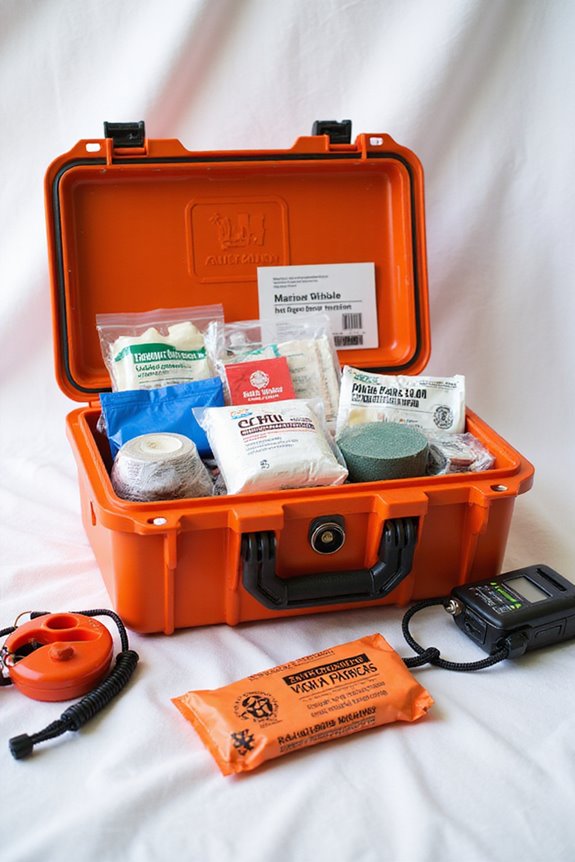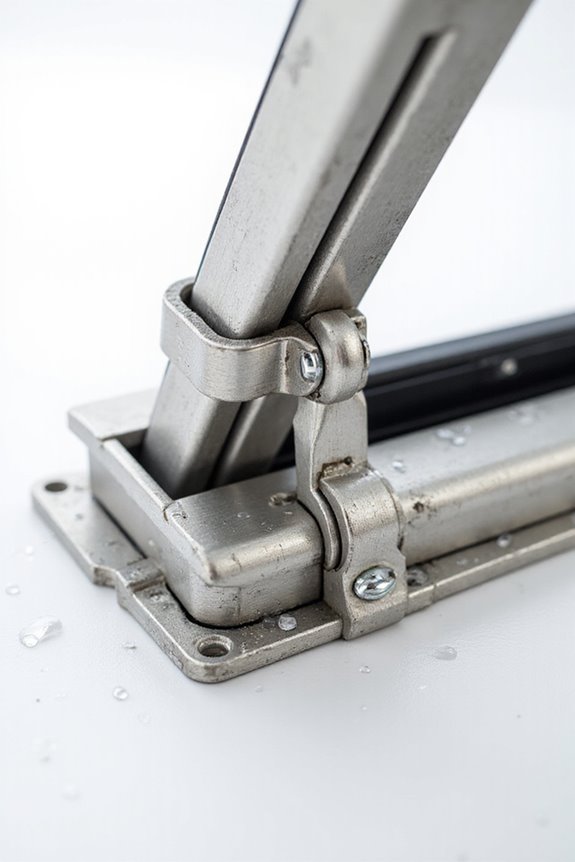You might wonder what first aid training you really need before setting sail. Well, most states and provinces require boaters—especially younger ones—to complete approved safety courses that include essential first aid skills like CPR and wound care. These certifications, often valid for two years, guarantee you’re ready if trouble hits the water. Carrying a stocked first aid kit and knowing how to use it is just as important. Curious about the best courses and gear? Stick around to get the full picture.
Key Takeaways
- Boaters should obtain Basic Life Support (BLS) certification to learn CPR, AED use, and wound treatment, renewing every two years for readiness.
- Many states and provinces require approved boating safety courses that include first aid training tailored for maritime emergencies.
- Core maritime first aid skills cover CPR, airway management, hypothermia treatment, and wound care critical for boating emergencies.
- Carrying mandatory first aid equipment like adhesive bandages, antiseptics, and a first aid manual is essential for compliance and safety.
- Certification can be obtained through organizations like the American Red Cross, DAN Boater, or community programs offering flexible, USCG-approved courses.
Basic Life Support (BLS) Certification for Boaters
When it comes to Basic Life Support (BLS) certification for boaters, we’re diving into some essential skills that could truly make a difference out on the water. So, why bother getting BLS certified? Besides boosting your confidence, the BLS certification benefits include knowing exactly what to do in emergencies—think CPR, AED use, and wound treatment. Now, the good news: BLS training formats are flexible, combining self-paced online study with live, hands-on skill sessions. This means you get both convenience and practical experience, perfect whether you’re a weekend sailor or aiming for a commercial license. Don’t worry about prerequisites, as anyone can join. Plus, keeping your skills fresh by renewing every two years guarantees we stay ready to help if a situation ever calls for it. Sounds like a smart move, right?
Boater Safety Education Laws by State and Province
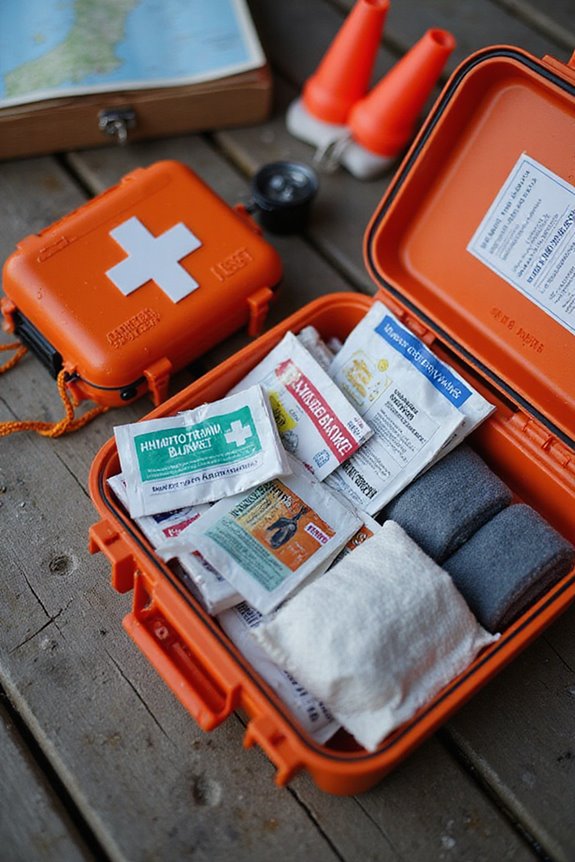
Knowing how to handle emergencies with Basic Life Support skills is a great start, but knowing the rules of the road—or rather, the water—is just as important. Boating education isn’t just a box to tick; it’s our shared roadmap to safety on the waves. Most states have specific state regulations requiring operators to complete approved boating education courses, especially for younger boaters. For example, California demands a boating card, while Arkansas requires courses for those born after 1986. Up north, every Canadian province mandates boating education too, all approved by Transport Canada. These courses cover everything from legal requirements to proper boating etiquette. And luckily, thanks to organizations like NASBLA, many states recognize each other’s certifications, so we can enjoy smooth sailing across borders without extra hassle. Who knew safety could unite us this well?
Core First Aid Skills Essential for Maritime Emergencies
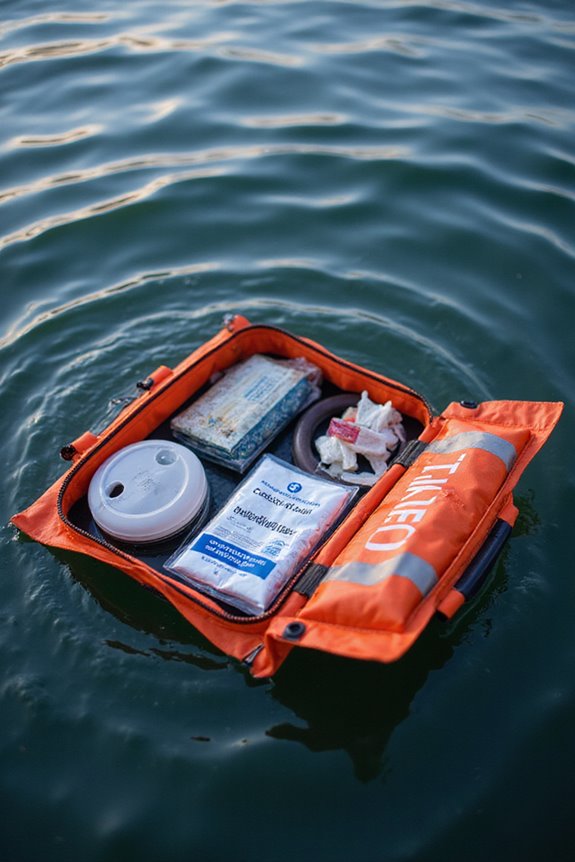
Let’s plunge into the five core first aid skills you need to handle maritime emergencies like a pro. First up: maritime first aid basics like CPR and airway management. Knowing how to perform chest compressions or clear a blocked airway could save a life on deck. Next, wound and injury care—whether it’s a nasty cut or a sprain, proper treatment and splinting are essential. Third, we can’t forget emergency response protocols; staying calm and following “Check, Call, Care” keeps us all safe and efficient. Fourth, managing sea-specific issues like hypothermia or seasickness is critical. Last but not least, survival skills help us stay composed and ready during extended emergencies. Together, these skills make our emergency response effective, keeping us prepared and connected out at sea.
Recommended Retraining and Continuing Education Intervals
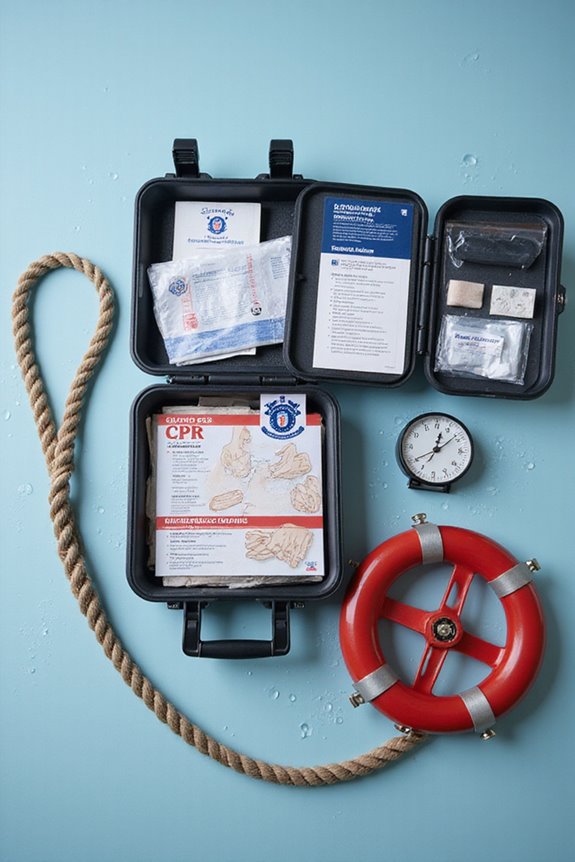
Mastering the key first aid skills is only part of the journey; keeping those skills fresh is just as important. We all know that feeling after a course—confident but wondering, “Will I remember this in a real emergency?” That’s why sticking to recommended retraining intervals matters. Typically, certifications, including CPR and first aid, last about two years, but the USCG often requires CPR cards to be updated yearly for licensing purposes. Following your state’s guidelines for retraining helps maintain certification validity and guarantees we’re ready to act fast and effectively. Plus, with online renewals becoming more common, staying current has never been easier. After all, wouldn’t you rather refresh your skills now than learn by trial and error on the water?
Mandatory First Aid Equipment to Carry Onboard
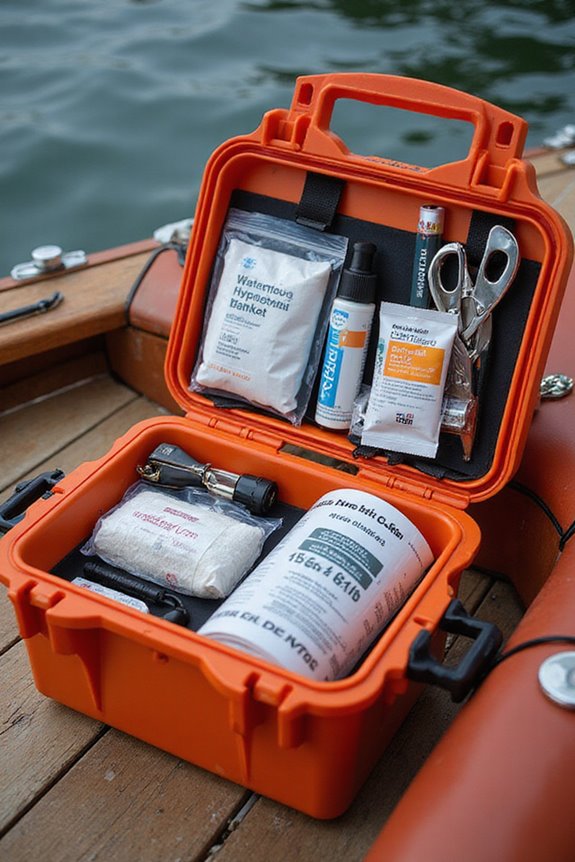
We’ve all heard the saying, “Better safe than sorry,” and when it comes to mandatory first aid equipment onboard, that couldn’t be truer. We understand first aid supplies like adhesive bandages, antiseptic wipes, scissors, tweezers, and sterile gauze are essentials for treating common injuries out at sea. Including a first aid manual is also a smart move; it guides us when every second counts. While U.S. Coast Guard certification isn’t required, it’s a reliable mark of quality that helps boost our emergency preparedness. Don’t forget wearable life jackets and throwable devices—they’re not just rules but lifesavers. So let’s gear up thoughtfully, because when we share this responsible spirit, every trip becomes safer and more confident. Who’s with us?
Federal and State Regulations on Incident Reporting
Although no one plans on having an accident while boating, knowing about federal and state regulations on incident reporting is essential for all of us who spend time on the water. When an incident occurs, proper incident documentation isn’t just paperwork—it’s a legal must. Federal law requires reporting accidents with serious injuries, fatalities, or over $2,000 in damage, usually within 48 hours or 10 days, depending on severity. Each state may tweak these reporting timelines and have its own forms, though many accept the U.S. Coast Guard’s CG-3865 form. Wondering who files the report? Usually, it’s the vessel operator or owner. Skipping this step isn’t worth it—penalties can include fines or even jail time. So, let’s keep our boating safe and by the book.
Specialized Training Opportunities for Advanced Boating Safety
Knowing how to report incidents properly is one thing, but what about staying ahead of potential problems on the water? That’s where specialized training in advanced navigation and emergency preparedness comes in. We’ve got access to some fantastic options—like the U.S. Power Squadrons’ in-depth courses or the U.S. Coast Guard Auxiliary’s advanced boating skills. These programs don’t just teach theory; they offer hands-on practice in things like high-speed maneuvers and rescue techniques, helping us handle tricky situations with confidence. Whether you prefer flexible online lessons from organizations like BoatUS Foundation or on-water training through local marinas, there’s a course for you. By sharpening our skills together, we not only boost safety but also join a community that truly values being prepared out there on the water. Who wouldn’t want that peace of mind?
The Role of CPR in Marine Emergency Response
Whenever we’re out on the water, emergencies can happen when we least expect them—so being ready to perform CPR could literally save a life. Knowing proper CPR techniques, like chest compressions at the right depth and rhythm, is essential. But it’s not a solo act; crew coordination makes all the difference. We’ve got to work together seamlessly, swapping roles to keep compressions steady, especially when the seas get rough or space is tight. Plus, using tools like AEDs boosts our chances of success. Think of CPR as the first critical link in a chain of survival, where quick actions and teamwork keep hope afloat. So, are we ready to step up and be that lifesaving crew? It’s a skill worth mastering for any boater.
Boater Licensing and First Aid Training Compatibility
We all want to be ready when the unexpected hits on the water, but did you know your boater license often depends on more than just knowing how to steer your vessel? Boater certification usually includes first aid and CPR training because, honestly, emergency preparedness is the real game-changer. Whether you’re going for a Six-pack or a 100-Ton Master license, the USCG requires you to complete approved first aid courses—think American Heart Association or the Divers Alert Network’s specialized programs. These aren’t just hoops to jump through; they guarantee we can handle medical emergencies on board. Plus, keeping your certification current, usually every two years, is a smart move. After all, being a part of this boating community means looking out for each other, right?
Resources for Accessing Certified First Aid Courses
Finding the right first aid course that meets your boating needs can feel a bit like steering through a dense fog, but it doesn’t have to be that way. Luckily, we have several maritime training resources—from the American Red Cross to specialized groups like DAN Boater—that offer U.S. Coast Guard-approved certifications. Prefer something flexible? Online course options blend self-paced lessons with hands-on sessions, fitting nicely into busy lives. Ever wonder where to start? Community centers and marine institutions like MITAGS provide tailored programs specifically for boaters. They guarantee we stay current with CPR and first aid skills, often requiring refresher training every two years. So, why not join a course that fits your schedule and keeps us all safe on the water? After all, being prepared feels a lot better than scrambling during an emergency.
Frequently Asked Questions
Can First Aid Training for Boaters Be Done Entirely Online?
We recognize wanting online certification and virtual training options, but we can’t fully replace hands-on skill checks essential for safety. Together, we need live sessions to guarantee real-world readiness and true confidence during emergencies.
Are Pets Covered in Boating First Aid Courses?
We’ve noticed most boating first aid courses don’t cover pet safety, so it’s up to us to learn pet first aid separately. Including this knowledge keeps our furry friends safe and strengthens our boating community.
What Languages Are Boating First Aid Courses Available In?
We’ve found that boating first aid courses are mainly in English, but some providers offer Spanish courses and French courses. Joining these options helps us all learn essential skills in a language that feels like home.
Is There a Minimum Age to Enroll in Boating First Aid Training?
We’re like gardeners nurturing young saplings—while many boating first aid courses ask for a minimum age of 12, some enrollment requirements set 16 or 18, ensuring everyone’s ready to grow safely and confidently together.
Can First Aid Training Reduce Boating Insurance Premiums?
We understand you’re wondering if first aid training leads to insurance discounts. While training benefits boost safety, which insurers value, discounts usually come from broader boating safety courses. Still, being prepared helps all of us stay safer together.

